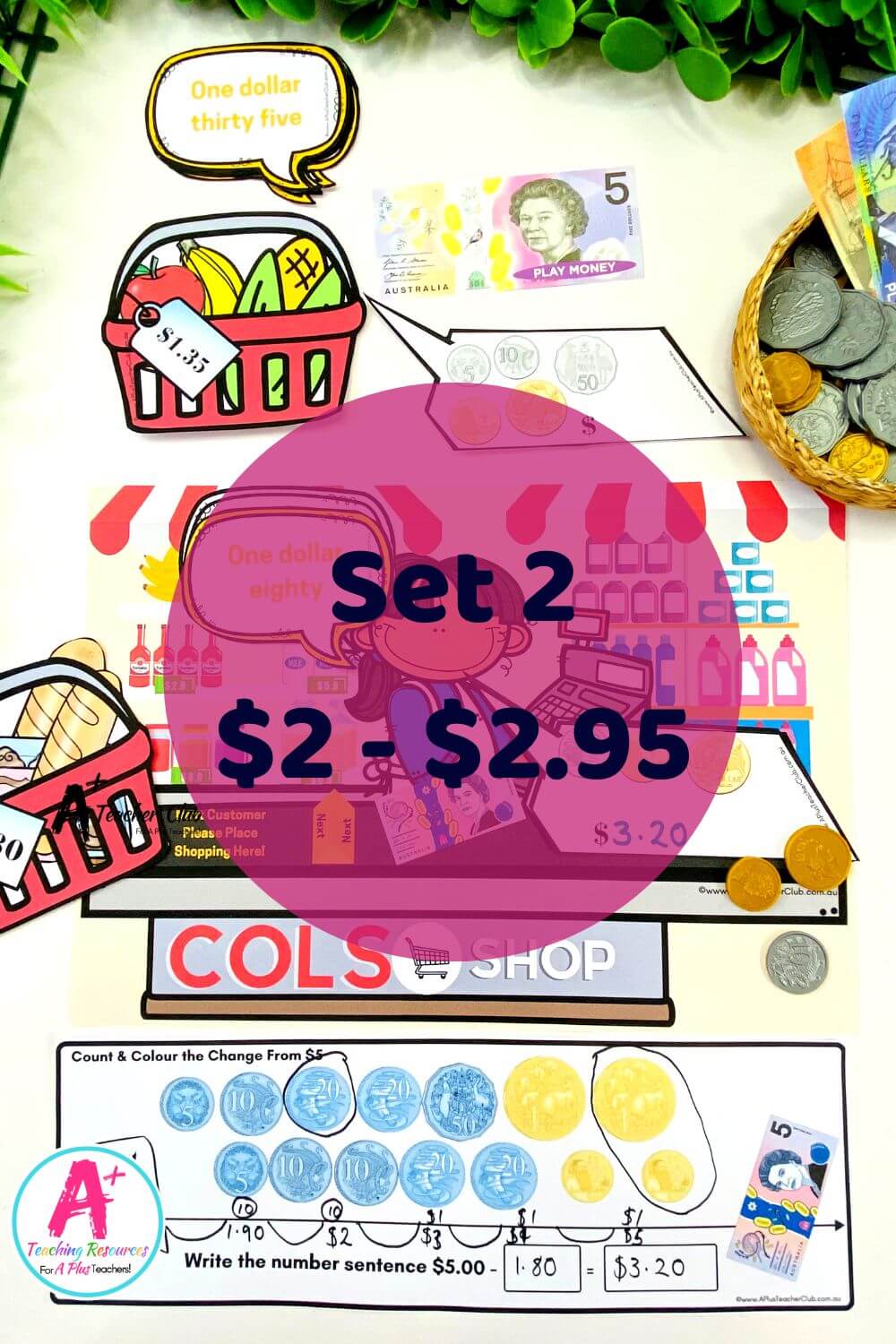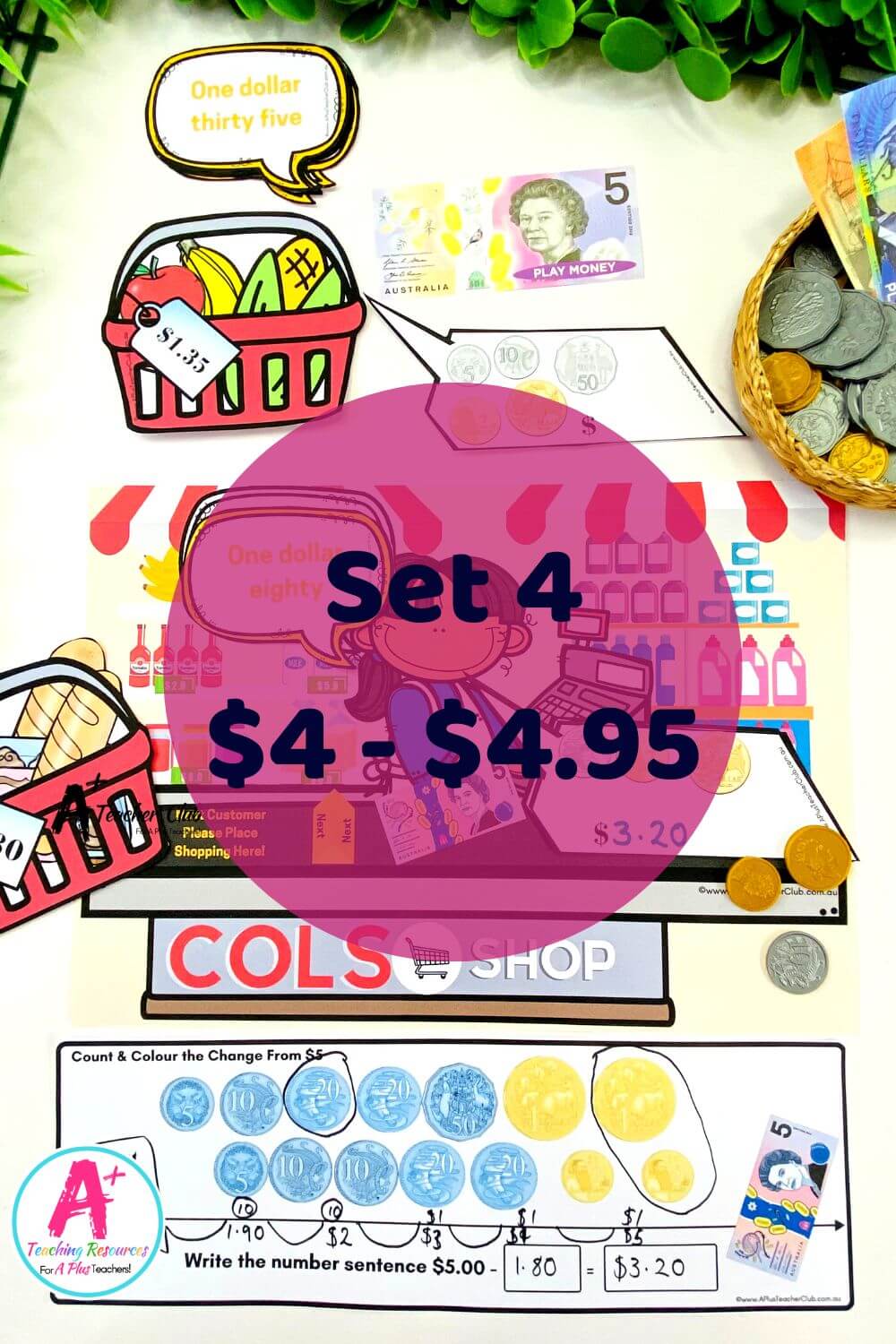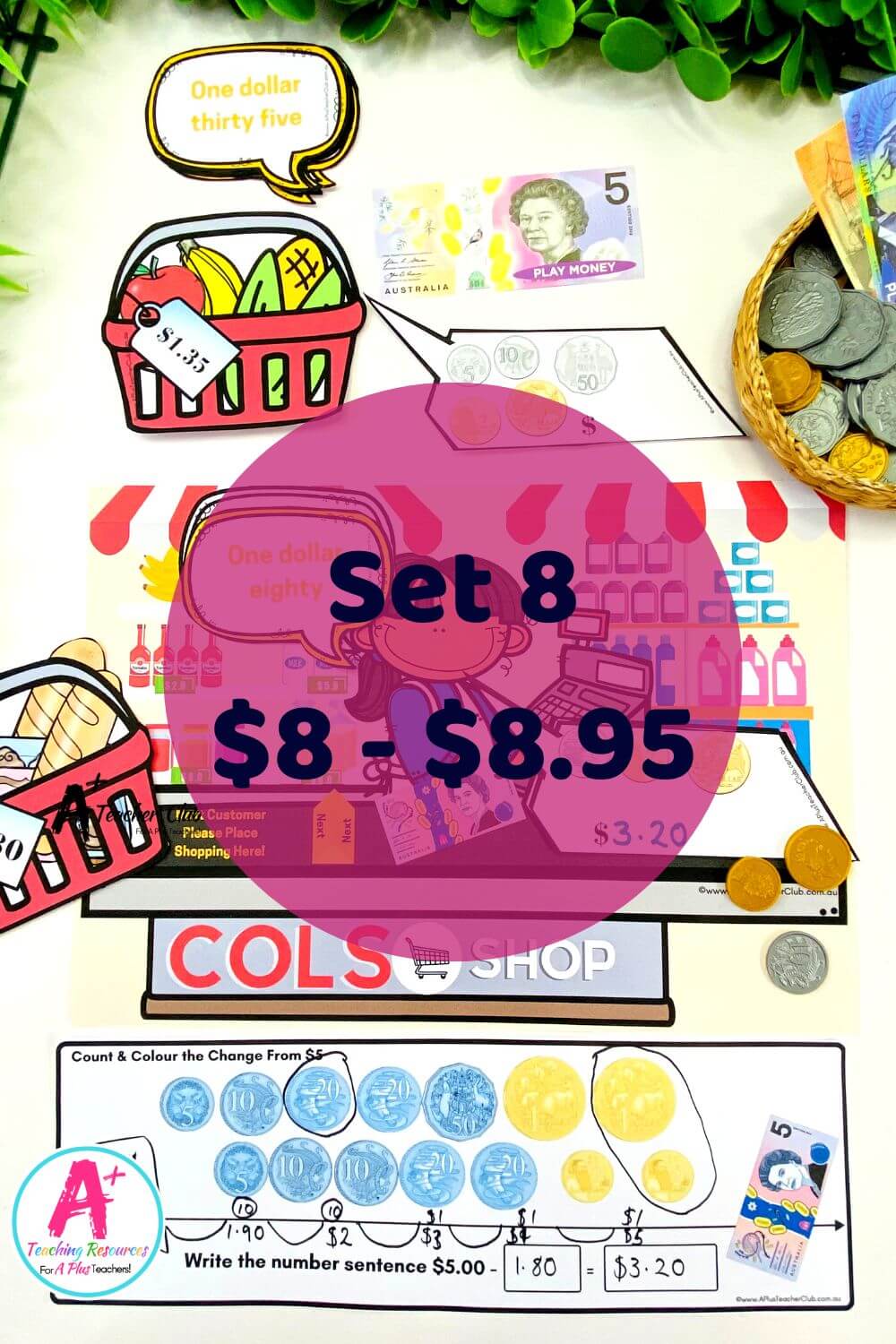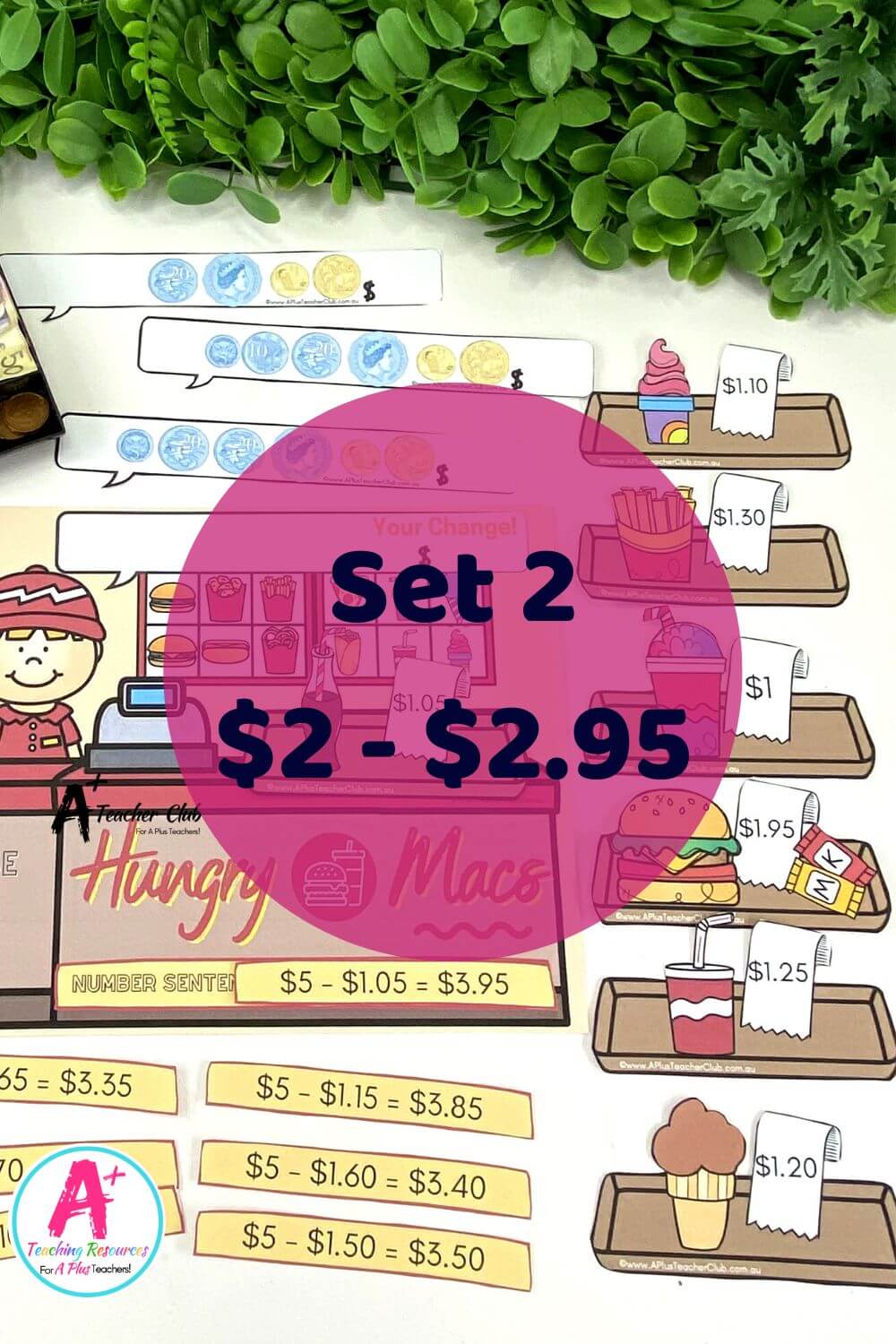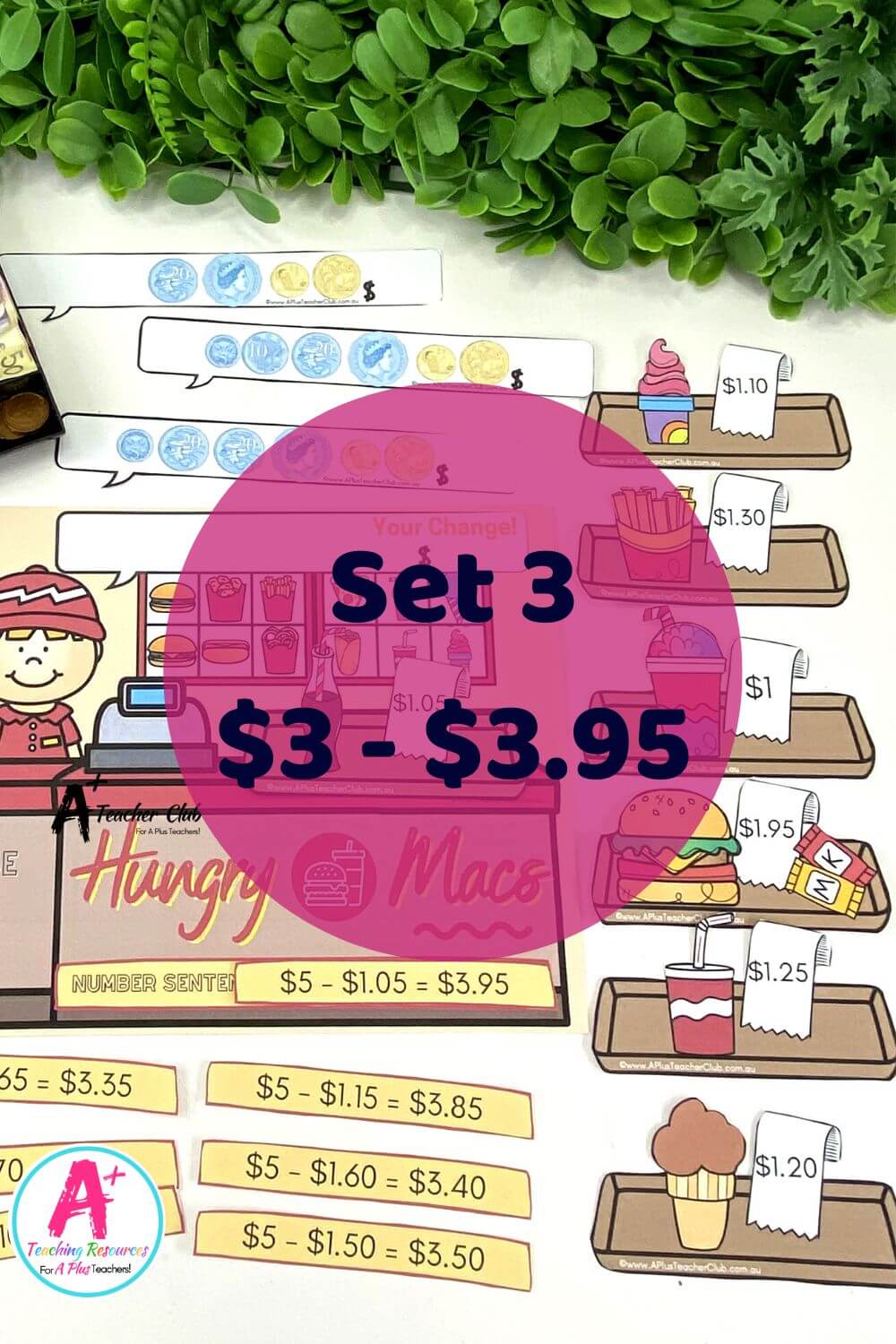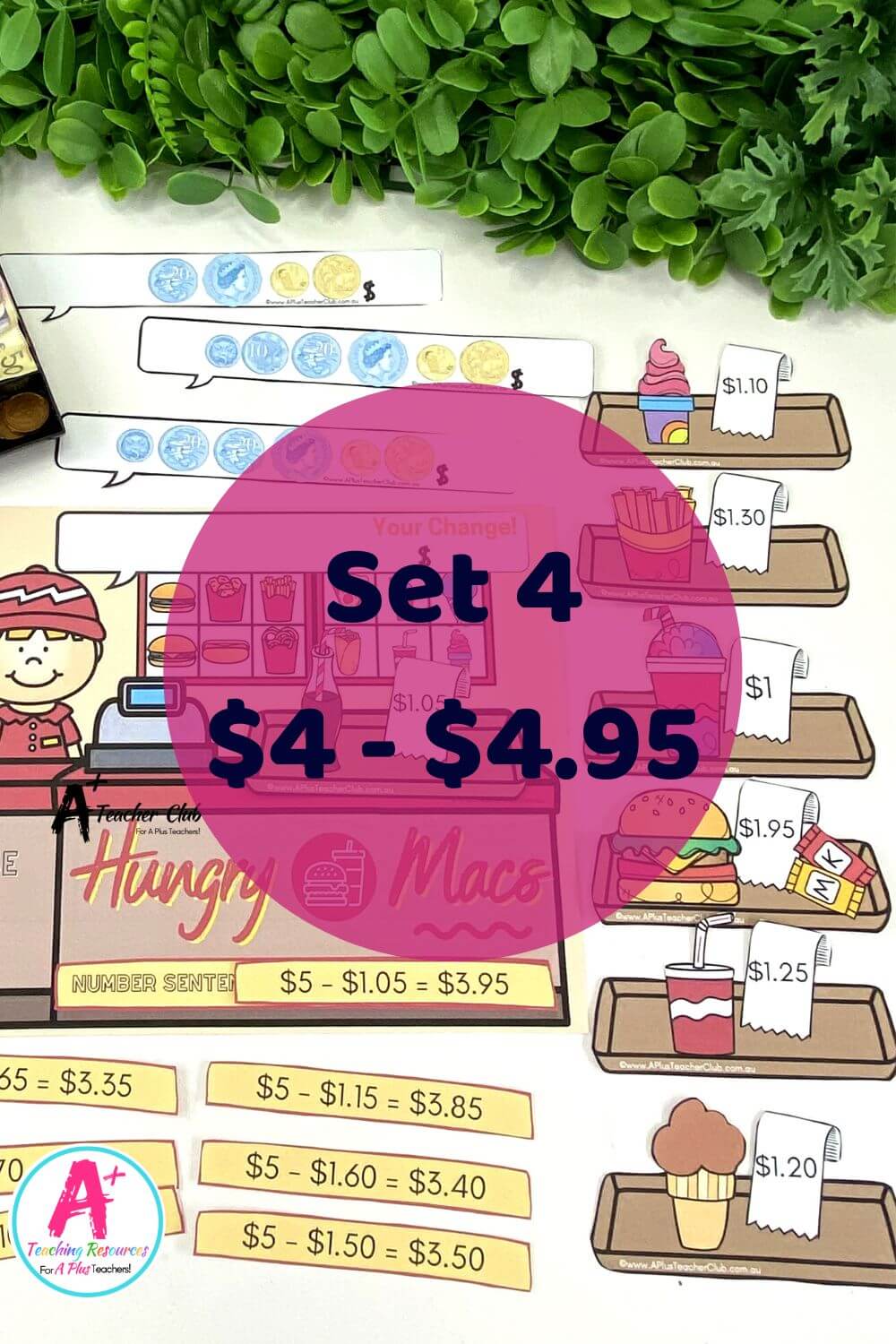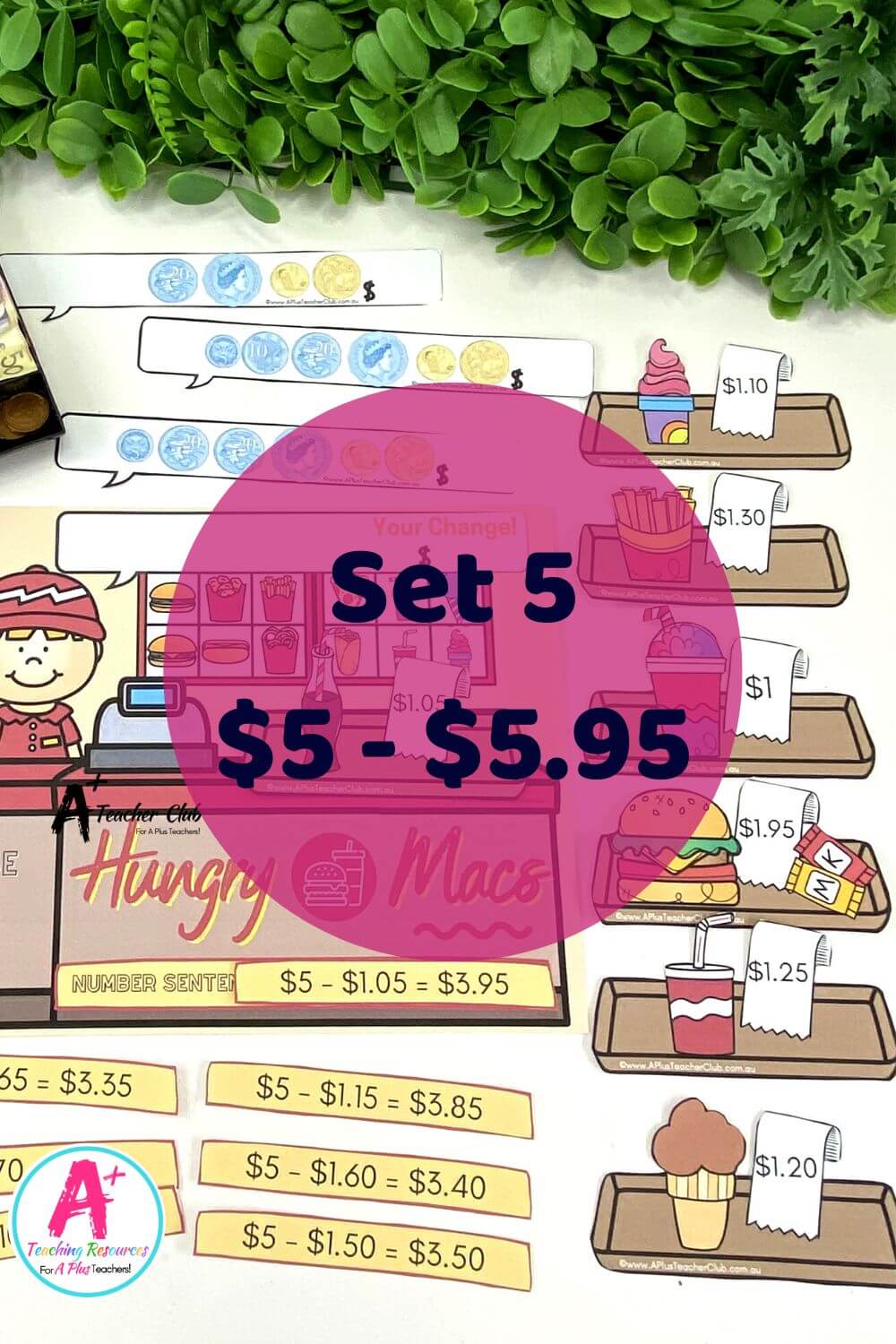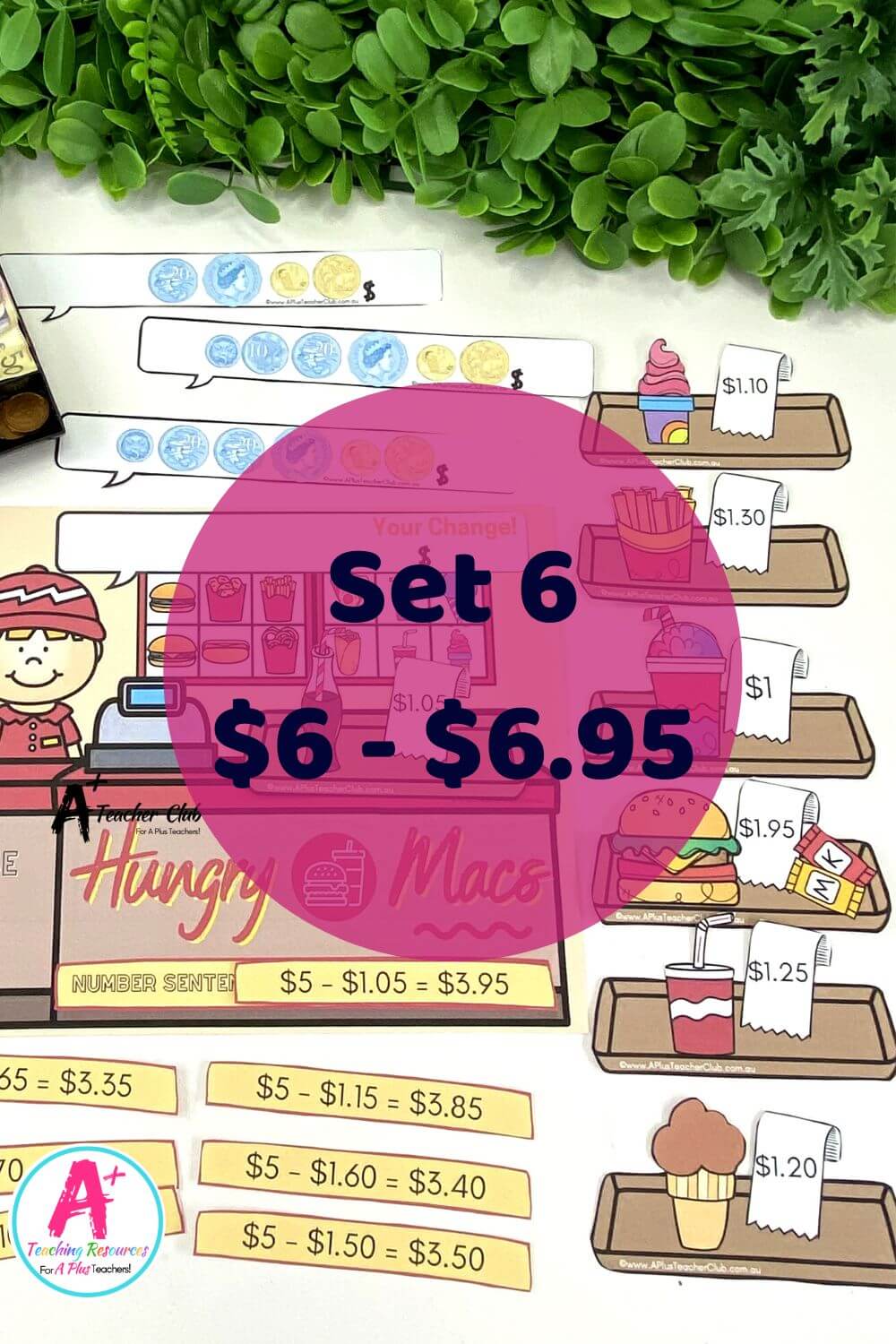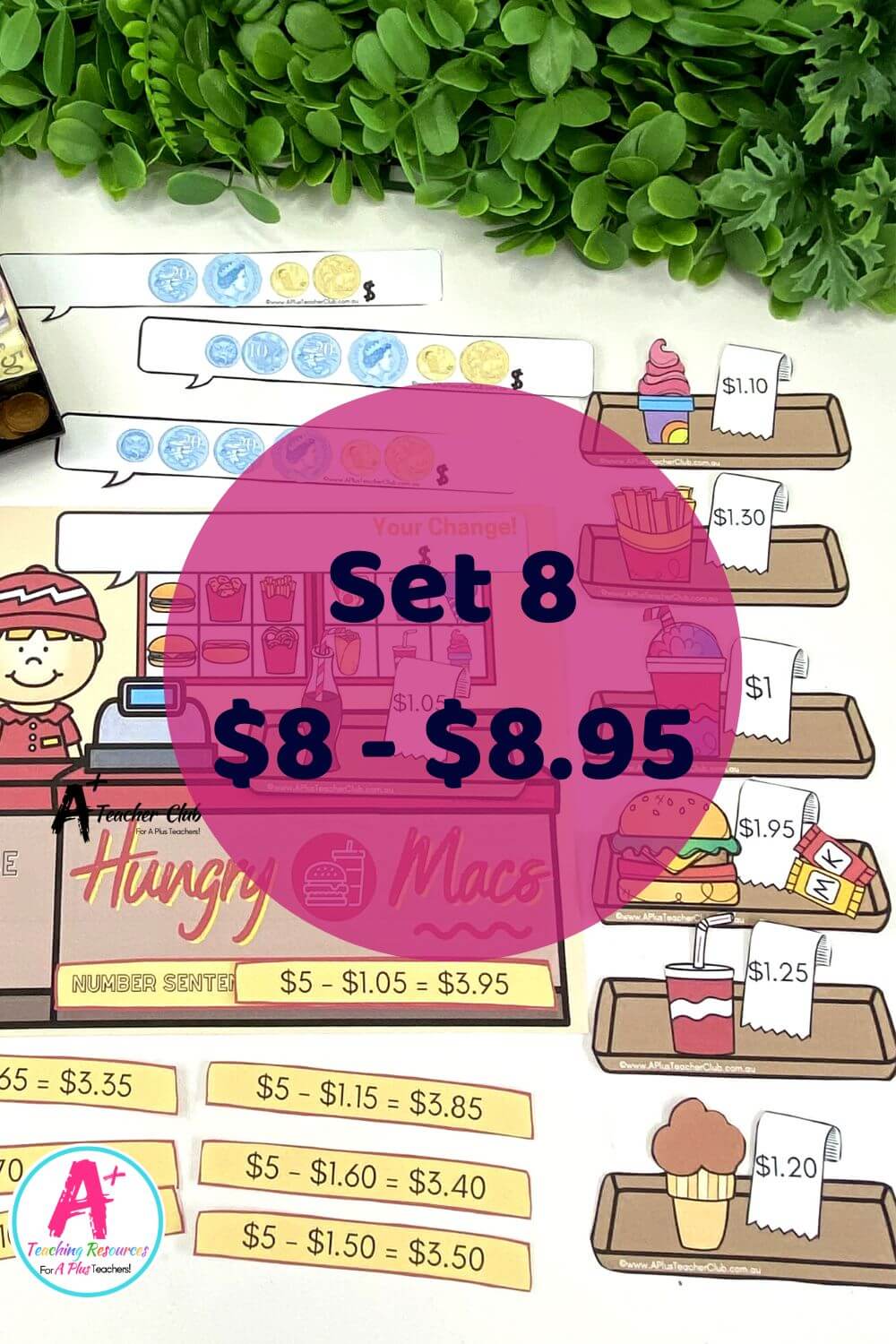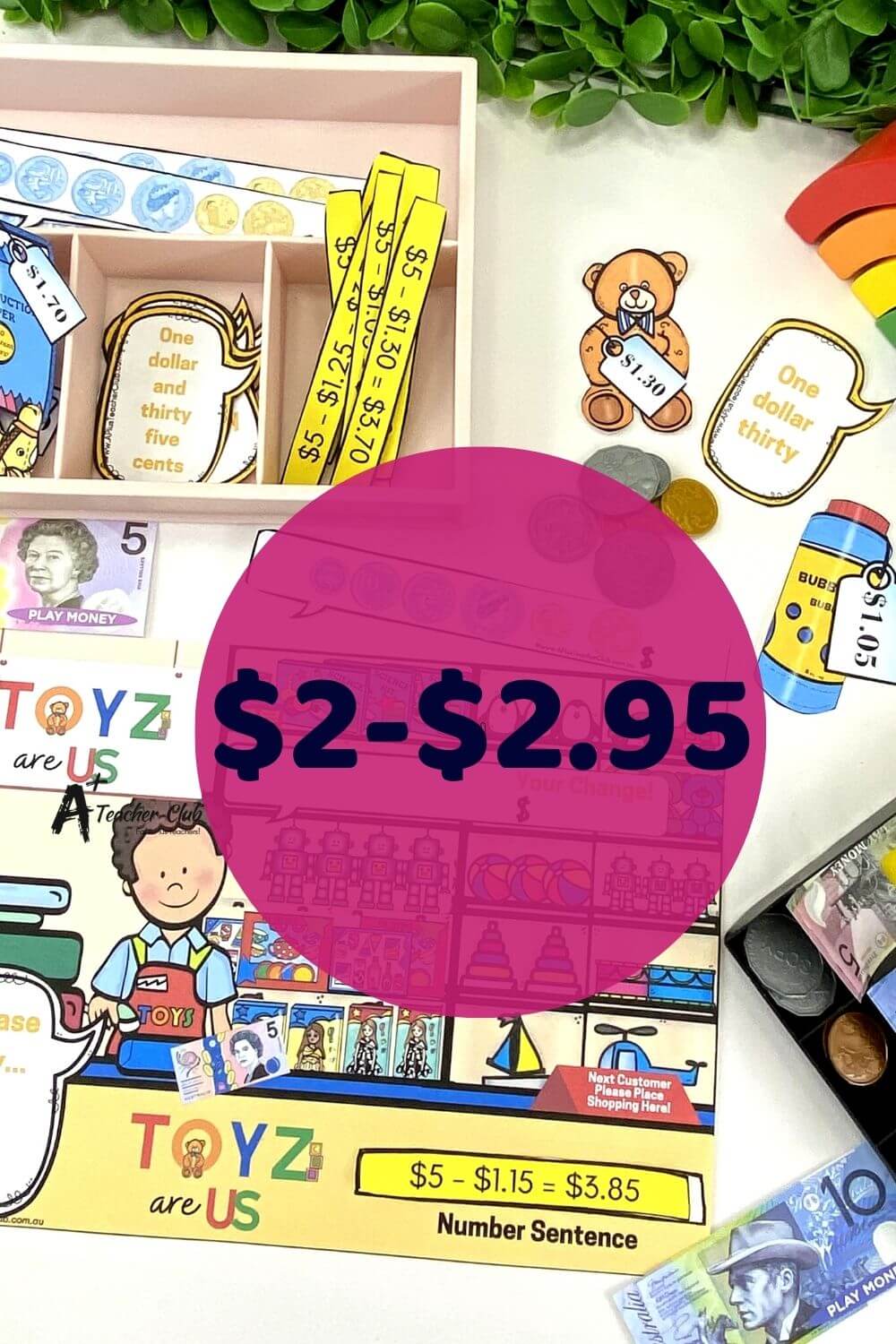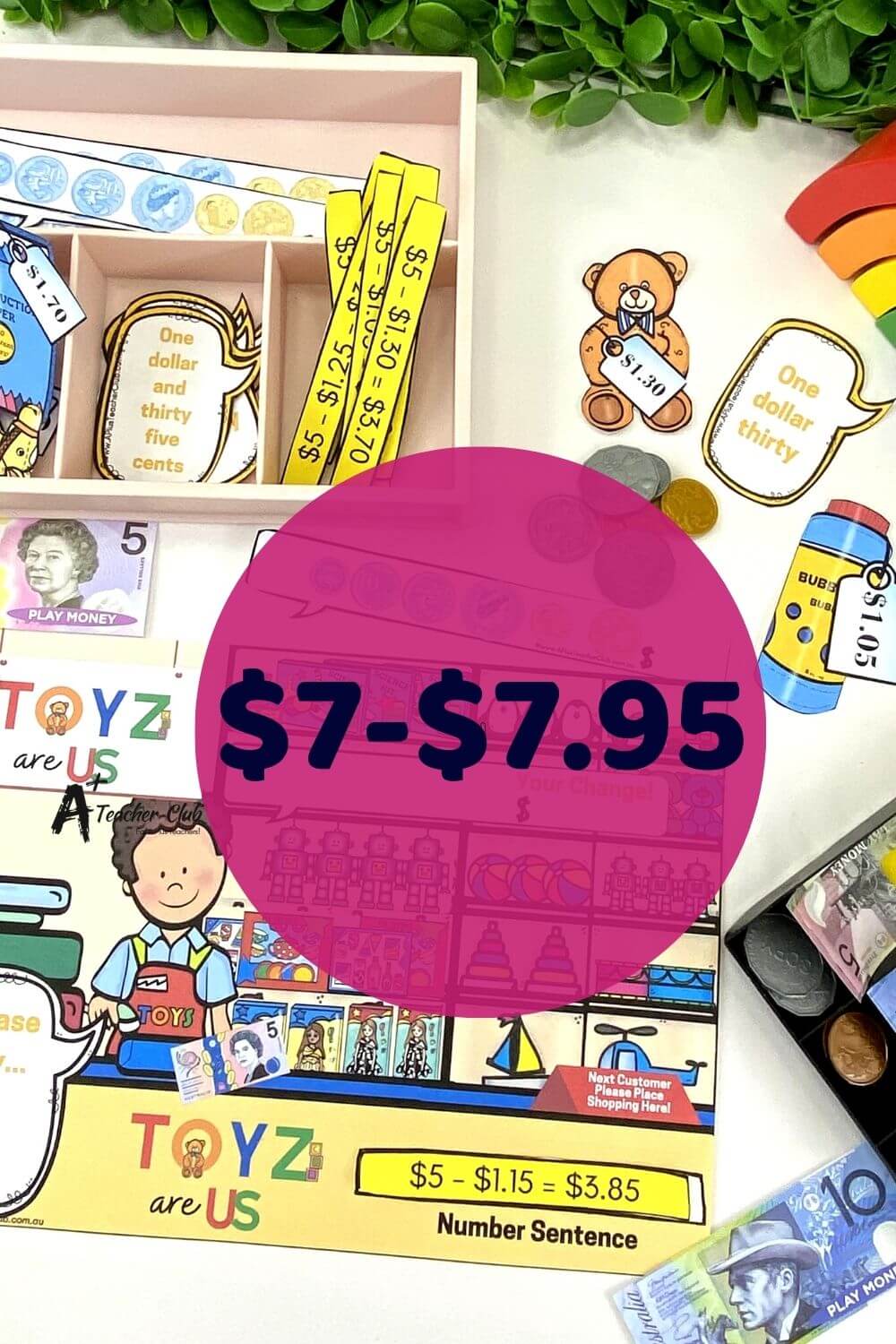Giving Change {Australian Money}
Money
Our Giving Change {Australian Money} will make counting back change a breeze for your Year 3 students. A must-have Hands-on, interactive shopping game for the BEST Ever Lesson on learning to count change to the nearest five cents!
Have you noticed that teaching Kids about money and giving change {Australian Money} is getting more and more difficult? ….We have too!
In this post, we will share with you what you need to teach your students about shopping and giving change, and our favourite Hands-on Australian Money Printables.
We’ve had many a discussion with other teachers about this and agree that it’s because kids get less and less opportunity to use, handle and even see real Australian coins and notes being used in daily life!
We live in a cashless society, where the majority of shopping transactions are made electronically using plastic cards and EFTPOS machines.
Physical money very rarely changes hands! We’re not using cash to pay for our purchases and we are NOT getting any change back either, and this has a HUGE impact on our students’ skills and confidence with Money.
So Teachers, having a class shop may be fun, but you’ve got your work cut out for you when it comes to teaching your kids to count the change required for simple transactions to the nearest five cents.
Let’s take a look at what you need to teach…
Understanding Australian Money
Understanding Australian money is a cornerstone of financial literacy. It starts with recognising and identifying the different denominations of Australian currency, including both coins and notes. Students need to familiarise themselves with the values of each coin and note, from the smallest five-cent piece to the highest denomination note. This foundational knowledge is crucial for counting and calculating money accurately.
In addition to recognising denominations, students must grasp the concept of dollars and cents and how to convert between the two. For instance, understanding that 100 cents make up one dollar is essential for making sense of real-world transactions. By mastering these skills, students will not only be able to handle money confidently but also develop a strong foundation in financial mathematics. This knowledge is vital for everyday activities, such as shopping, budgeting, and saving, making it an indispensable part of their education.
Teaching Giving Change {Australian Money}
The best way to learn about change is by using Role-play shopping situations that involve tendering cash and receiving change. Using play money and even number lines is useful for building an understanding of working out the change due.
Students need to know that Change is:
- The amount you have overpaid when you don’t pay with the exact amount of money
- It’s the difference between the money you give the cashier and the price of your purchase
- Change is worked out by counting up from the cost price to the amount you have given the cashier
- Another method involves subtracting money to find the difference between the amount paid and the cost price
e.g. a book that costs $2.70 you give the cashier a $5 note.
To work out the change the student starts counting back the coins as they count
- give back 20 cents and say “two dollars ninety”
- then give back 10c and say: three dollars
- Next, give back a $2 coin and say “five dollars”
Using play money, shopping catalogues and setting up a shop is the best way to develop giving change, so don’t be tempted to show students an algorithm before they’ve tried it hands-on.
With this in mind, we’ve created a range of “Money Play Centres” that encourage these transactions so your students will be working out the change in no time.
Calculating Change
Calculating change is a vital skill when dealing with Australian money. It involves determining the difference between the amount paid and the cost of an item. This process requires students to count back coins and notes to ensure they give or receive the correct change. For example, if an item costs $4.75 and a customer pays with a $10 note, students need to calculate the change due, which in this case is $5.25.
To calculate change accurately, students must understand subtraction and be able to round to the nearest five cents, as Australian currency does not include one- or two-cent coins. Practising this skill helps students develop their problem-solving abilities and builds their confidence in handling money. By regularly engaging in activities that involve calculating change, students will become proficient in this essential aspect of financial literacy.
Giving Change Money Games
With these pretend shop money games everyone can play shops!
Everyone wants to be playing shops at the same time, and things can get a little prickly while the kids are waiting for their turn. So we created these fun pretend play packs to practise shopping & giving changes.
Use in small groups or individuals. To play Students:
- First, pick a shopping basket & load it onto the checkout
- Next, they match the cost of the shopping in words to the price tag
- Pay the cashier
- Count back the change using play money and the student working out sheets to help them
- Complete the student sheet (so you can track their understanding)
- Go shopping again!
They’re the perfect addition to your math rotations and class shop. Download ALL the different variations and themes.
Resources listed in this collection
Click to jump to...-
Counting Change Games - COLS Set 1 ($1-$1.95)
-
Counting Change Games - COLS Set 2 ($2-$2.95)
-
Counting Change Games - COLS Set 3 ($3-$3.95)
-
Counting Change Games - COLS Set 4 ($4-$4.95)
-
Counting Change Games - COLS Set 5 ($5-$5.95)
-
Counting Change Games - COLS Set 6 ($6-$6.95)
-
Counting Change Games - COLS Set 7 ($7-$7.95)
-
Counting Change Games - COLS Set 8 ($8-$8.95)
-
Counting Change Games - COLS Set 9 ($9-$9.95)
-
Counting Change Games - Fast Food Set 1 ($1-$1.95)
-
Counting Change Games - Fast Food Set 2 ($2-$2.95)
-
Counting Change Games - Fast Food Set 3 ($3-$3.95)
-
Counting Change Games - Fast Food Set 4 ($4-$4.95)
-
Counting Change Games - Fast Food Set 5 ($5-$5.95)
-
Counting Change Games - Fast Food Set 6 ($6-$6.95)
-
Counting Change Games - Fast Food Set 7 ($7-$7.95)
-
Counting Change Games - Fast Food Set 8 ($8-$8.95)
-
Counting Change Games - Fast Food Set 9 ($9-$9.95)
-
Christmas Maths Toy Shop Money & Change Game ($1-$1.95)
-
Christmas Maths Toy Shop Money & Change Game ($2-$2.95)
-
Christmas Maths Toy Shop Money & Change Game ($3-$3.95)
-
Christmas Maths Toy Shop Money & Change Game ($4-$4.95)
-
Christmas Maths Toy Shop Money & Change Game ($5-$5.95)
-
Christmas Maths Toy Shop Money & Change Game ($6-$6.95)
-
Christmas Maths Toy Shop Money & Change Game ($7-$7.95)
-
Christmas Maths Toy Shop Money & Change Game ($8-$8.95)
-
Christmas Maths Toy Shop Money & Change Game ($9-$9.95)
Supermarket Counting Change Games
Fast Food Counting Change Games
Toy Shop Counting Change Games
Explore tags
More Teaching Money Activities
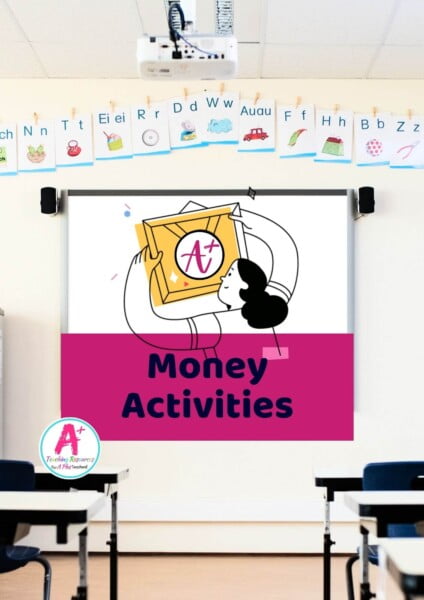
Money Printables

Money - Coins
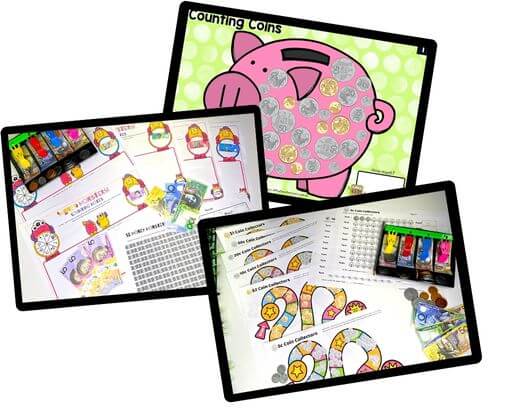
Money - Counting Coins & Notes
Can't find what you're looking for?
Send us a request! Use this form to request a resource. Please give details of the learning area, topic, year level, curriculum links. We’ll be happy to take a look to see if we can fit it in. Unfortunately a request does not guarantee we will be able to make it!
"*" indicates required fields


